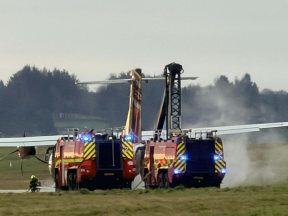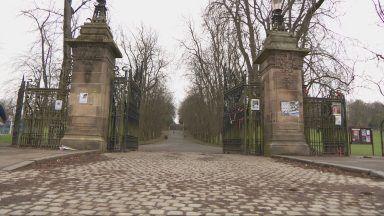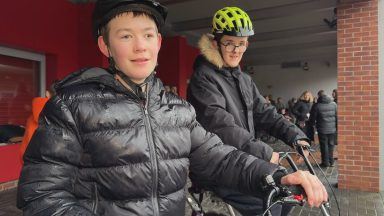On September 24 1975, a team of British climbers became the first to ascend the summit of Mount Everest via its fearsome Southwest Face.
Led by global climbing legend Sir Chris Bonington, the challenge remains one of the greatest mountaineering achievements in history.
The expedition set their sights on a new route, considered one of Everest’s toughest due to its length and exposure to the elements.
Now 91, Sir Chris reflects on the incredible feat – and why he’s glad the group climbed Everest ‘The Hard Way.’
‘A world away’
In 1975, there were no satellite phones, no GPS trackers, no Instagram posts from the summit. Once on the mountain, the team was cut away from home.
Sir Chris told STV News: “When you set out, you were completely cut off. Your mail came in weeks late – letters from your wife or girlfriend would take about eight weeks to reach you. Very often they never arrived at all. That was the huge difference between then and today.
“In a way it was a good thing. You were completely involved in that expedition, the home and everything else was distant and far away. As a team you just concentrated in this tiny little world.”
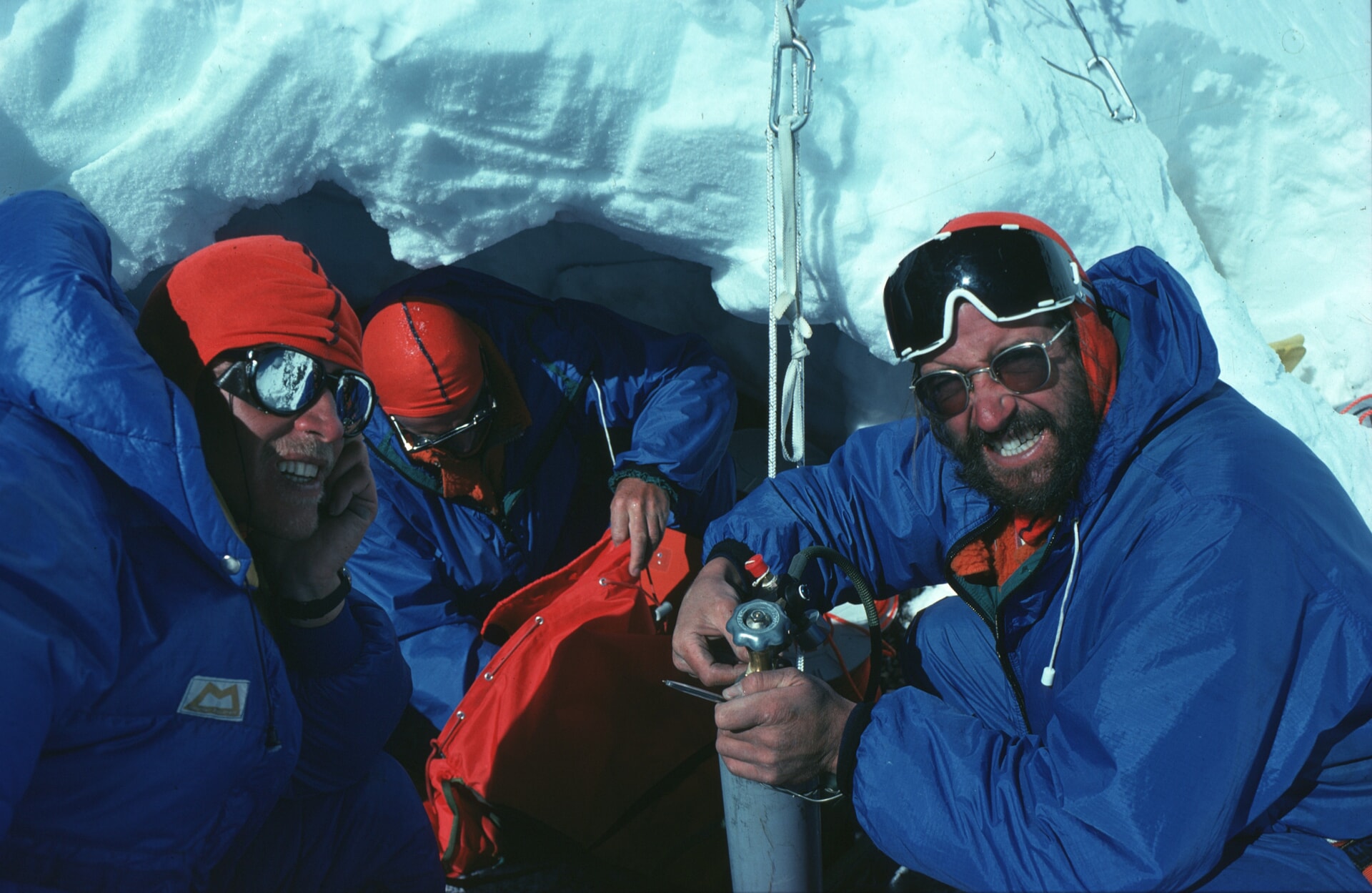 Chris Bonington
Chris BoningtonTragedy struck on the journey to Everest in August. A young Sherpa, Mingma Nuru, was killed in a fall on the trek to Base Camp, casting an early shadow over the expedition.
Doug Scott, who had taken Mingma under his wing, was deeply affected and nearly turned his back on the mission – but with a renewed sense of purpose, the team pressed on.
The expedition to Everest’s Southwest Face consisted of the 18-member climbing team and was supported by approximately 60 Sherpas, high-altitude porters, drivers, cooks, and a BBC TV crew.
Sir Chris selected his team with painstaking care.
“You needed people who were, firstly, very good at their job as mountaineers. You also needed people with stable temperaments who could get on with each other.
“Dougal Haston, for instance, was probably one of the finest mountaineers the world’s ever had. A brilliant climber and mountaineer, completely self-confident, not egotistical, very easy to work with. We had a good understanding between ourselves; you didn’t need to talk about it, you sensed it.”
The Sherpas led by Pertemba Sherpa, a Sirdar from Solukhumbu, hauled tonnes of gear, food and oxygen up the mountain.
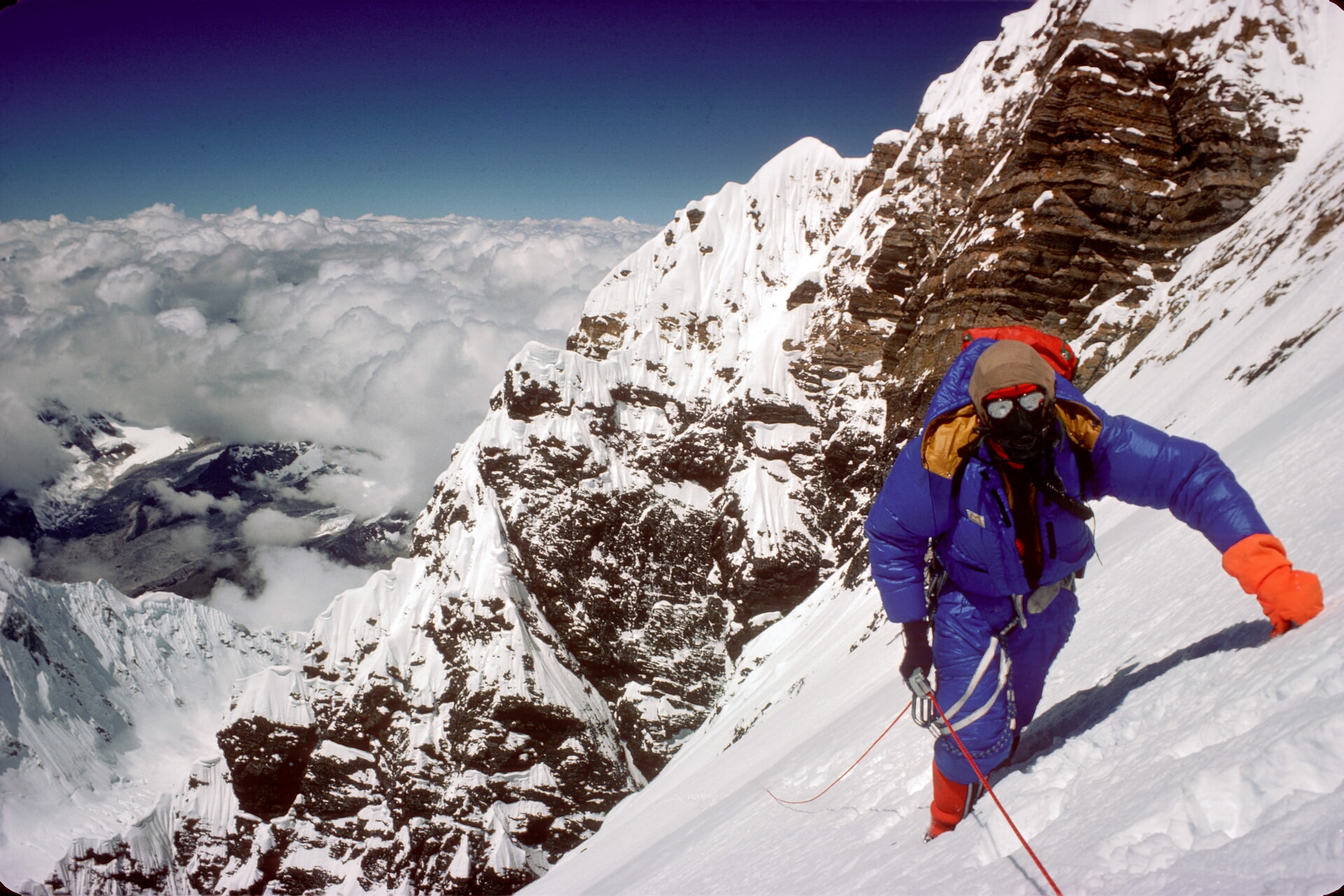 Doug Scott
Doug Scott“The Sherpas were absolutely vital. They were helping to make the route, deal with crises that occurred lower down, such as when a fixed rope broke or camp had been swept away. They get stuck in and getting the whole thing sorted out and organised. They were wonderful.”
The Southwest face had defeated Sir Chris’ team three years earlier. In 1975, when a cancelled permit gave the British another shot, he initially declined the idea of mounting such a huge operation again.
“I thought I’d go for a small lightweight expedition by the ordinary route. Dead easy to organise. But the others, particularly Dougal, kept on at me: ‘Chris, wouldn’t you feel disappointed just walking up the easy way?’
“Finally, right at the last minute, I realised I had to do it. In a way it was the best thing I ever did.”
At 6pm on September 24, Dougal Haston, from Edinburgh and Doug Scott from Nottingham made history bhy becoming the first to stand on the summit after the first ascent from the Southwest Face.
As night fell, they were forced to spend the night in a hand-dug cave on the mountain without tents, food or oxygen, spending a total of 30 hours without food or sleep.
During the descent of a subsequent climb, Peter Boardman and Pertemba Sherpa encountered filmmaker Mick Burke, who hoped to capture footage from the peak. He was presumed to have made it to the top, but never returned.
A storm that set in shortly after made rescue attempts impossible.
‘You’ve got to put fear out of your mind’
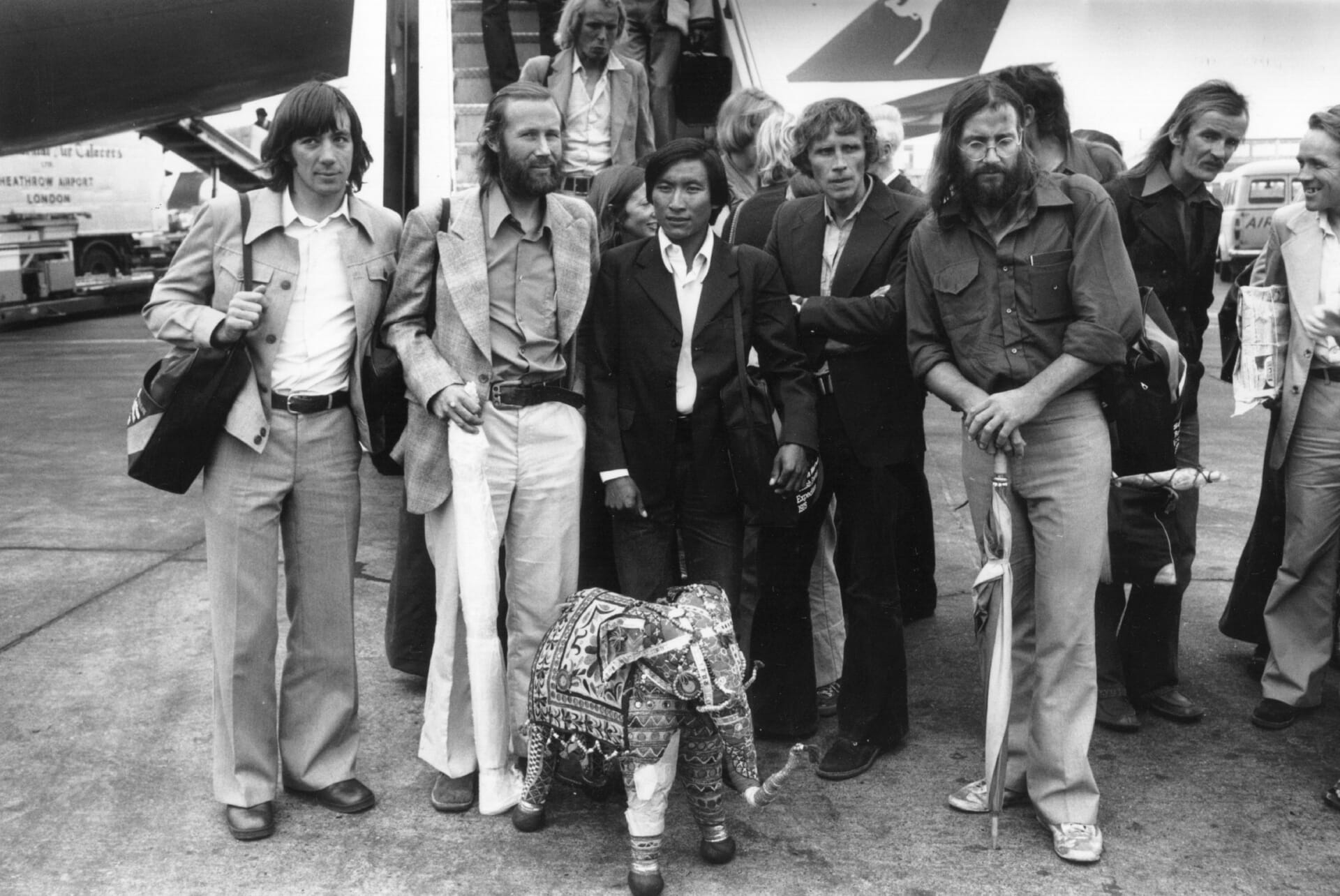 Getty Images
Getty Images“I remember when I went down and told the people who were with him, ‘Make sure Mick comes back. He’s been up high too long. He should be back.’ I was really concerned with that. But Mick was an incredibly determined soul.”
Sir Chris added: “We all understood the risks and dangers that mountaineering has. We knew that there’s always a possibility you wouldn’t come home.
“As the leader, I was responsible for the lives of all members of my team. I knew on expeditions that there was a likelihood someone was going to die.
“That made it easier, if you like, to face the reality of tragedy when it did occur.”
Despite their losses, the team’s achievement was hailed around the world. They were feted at Buckingham Palace and hit international headlines.
Later that year, the expedition was awarded the Livingstone Medal by the Royal Scottish Geographical Society.
Sir Chris’ account of the expedition, Everest: The Hard Way, became a bestseller in 1976 – the first of 17 books he has written about mountaineering. In 1976, he was awarded the CBE.
Haston was tragically killed in a Swiss avalanche aged 36 in 1977, while Scott continued to explore the world’s highest peaks and devoted much of his life to supporting communities in Nepal before his death aged 79 in 2020.
Sir Chris says he is grateful to have tackled Everest when he did.
“When we climbed in 1975, only one expedition was allowed at a time. Commercial expeditions hadn’t even been thought of. Now there are literally hundreds going up every year, a line of fixed rope all the way up the mountain. It’s a whole different ball game now.
“It’s become an industry. Nothing wrong with that – it’s good for the economy of the people of Nepal. But it’s a completely different world to the one we lived in.”
More than 340 people have died attempting Everest since the 1920s, their bodies often remaining on the mountain. For Sir Chris, the dangers were not something to ignore, but to accept as part of the challenge.
“You’ve got to put fear out of your mind – it’s a very destructive thing. You gain that ability, being in these experiences in your climbing career so often.
“I live very much in the present. I take on whatever was coming my way analytically when things go wrong. I automatically start working out how I get round the problem, rather than panicking.
“Brilliant climbers are people who are attracted to danger and find it a stimulus. The fact it is dangerous is what makes it exciting and worthwhile.
“It was a mammoth undertaking and of its time – thank goodness we did it.”
Follow STV News on WhatsApp
Scan the QR code on your mobile device for all the latest news from around the country


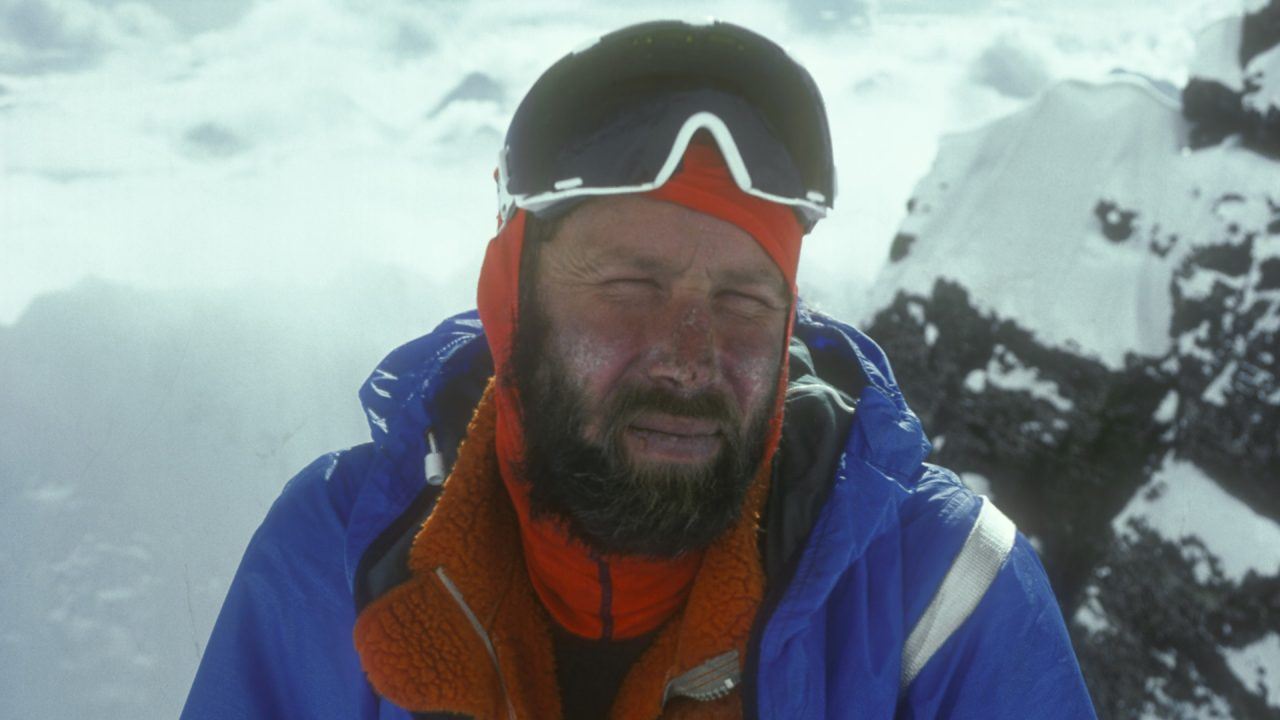 Chris Bonington
Chris Bonington



